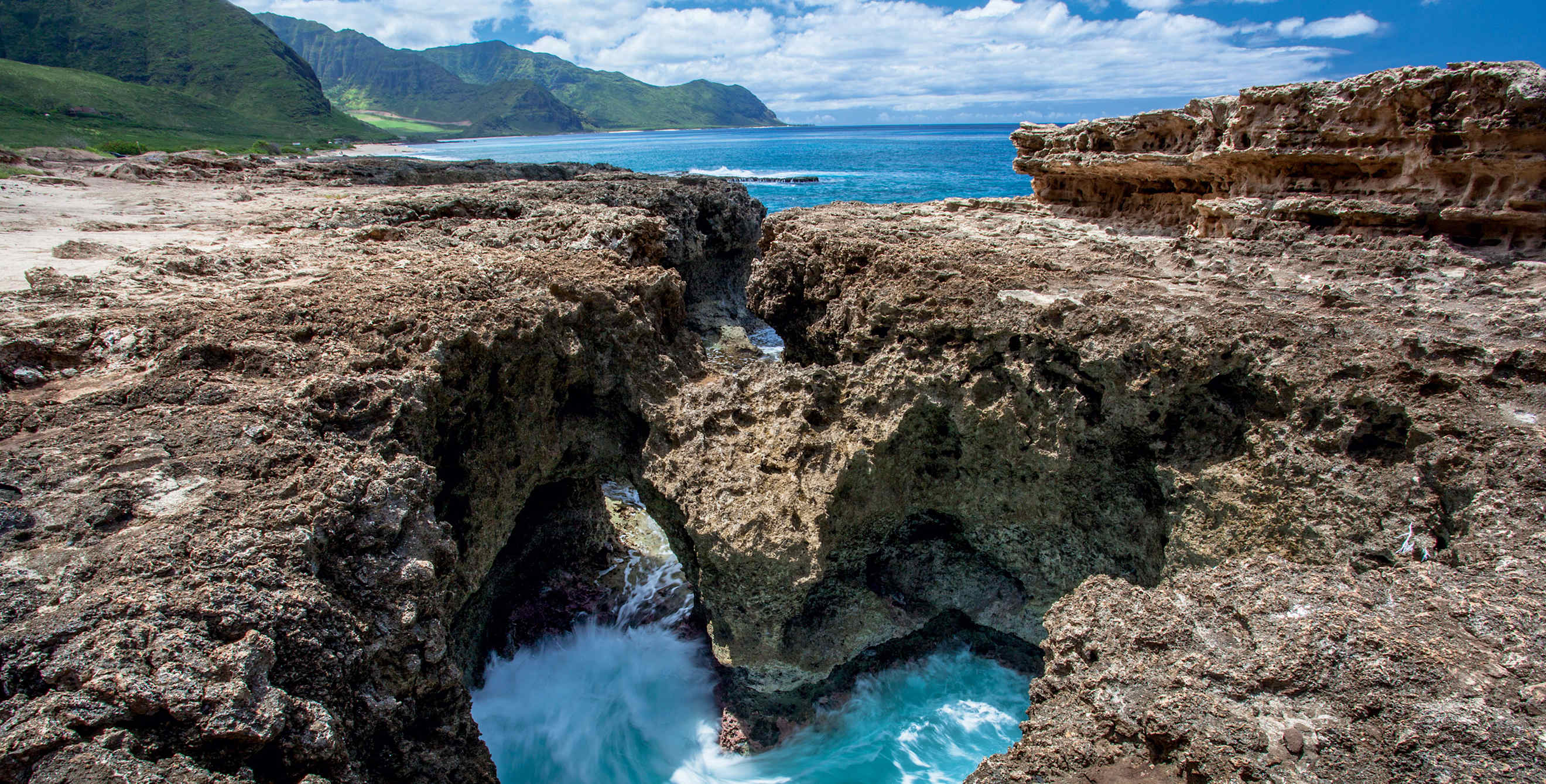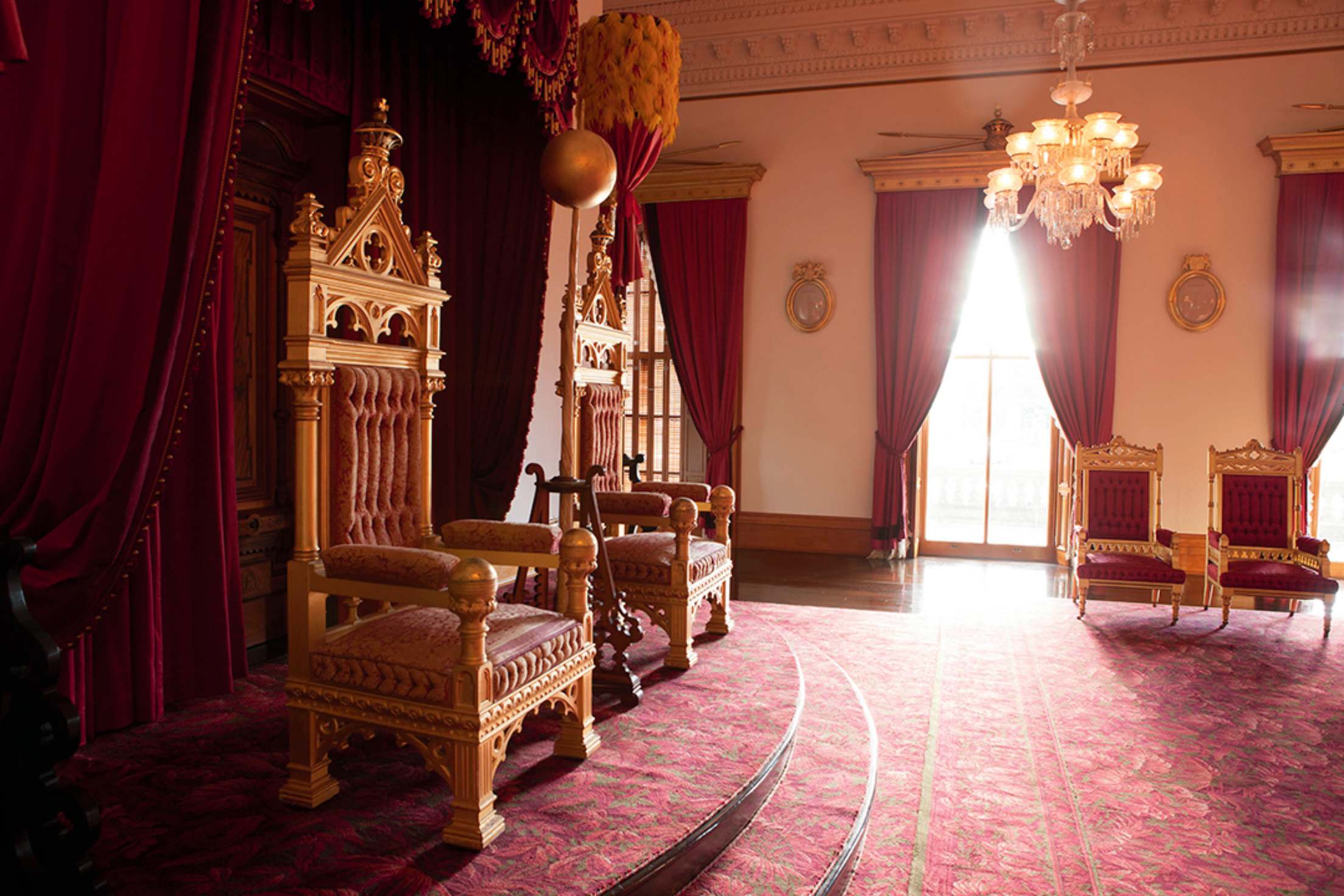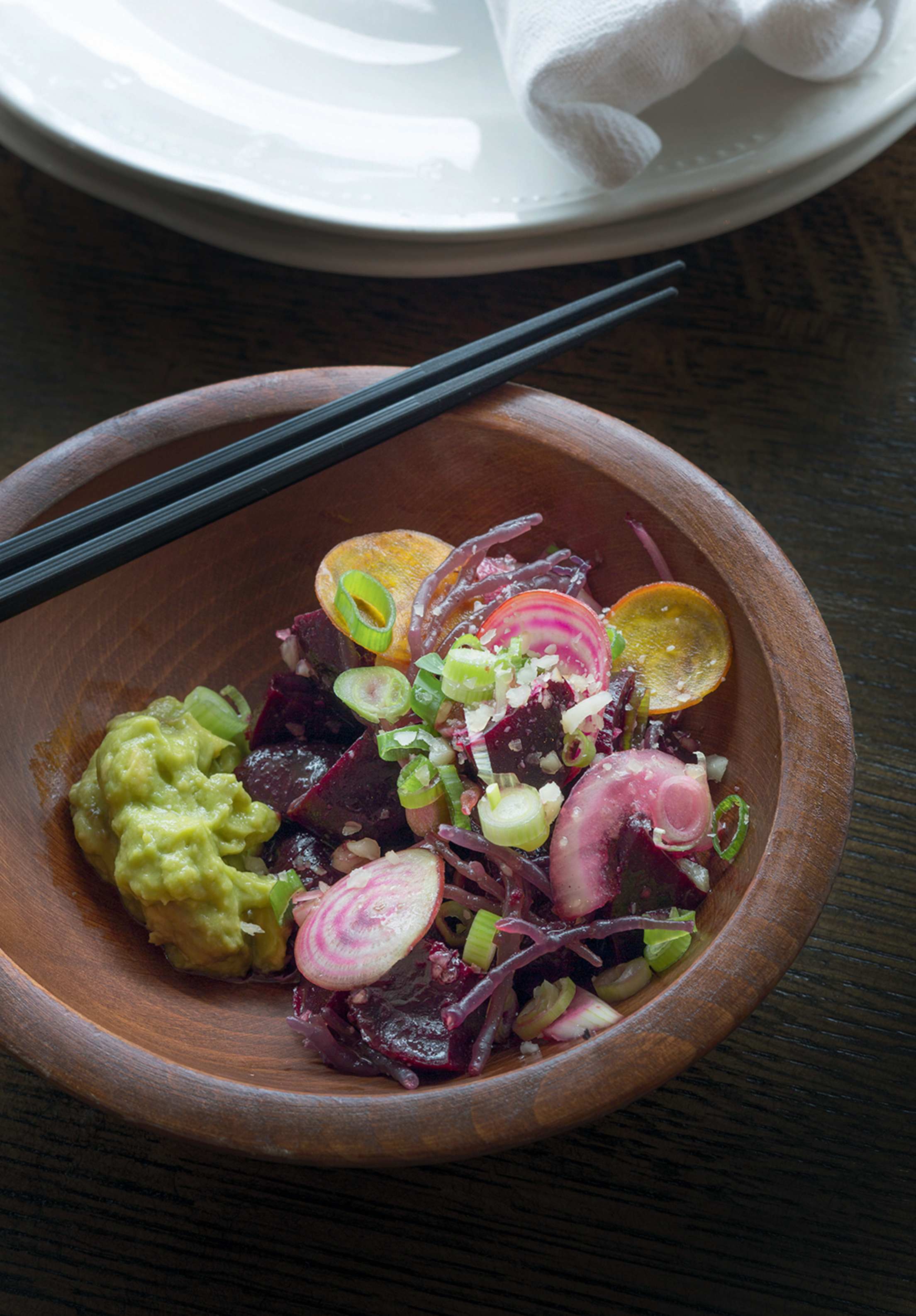
A Local's Insider List of Things to Do on Oahu
If you want to discover the secret charms of Hawaii's most visited island, it pays to ask a local.

When I was a child growing up in Hawaii, Iolani Palace was a neglected government office building surrounded by stately banyan and monkeypod trees. Built in 1882 by King Kalakaua, the American Florentine–style edifice in Honolulu has since been restored, its wood-paneled rooms filled with fine art and calabashes. On a recent visit, I lingered in an upstairs room, empty but for one item: a "crazy quilt" sewn in the patchwork style popular among Victorian women. When Kalakaua's sister and successor, Queen Liliuokalani, was overthrown in 1895, she was imprisoned in this room, and she and her ladies-in-waiting stitched a story. Panels of disintegrating silk depict a phoenix, the helmet of a queen's guard, and a pueo, or owl, said to be a guardian spirit. Embroidered in the queen's cursive are important dates and details of her reign. It is a poignant testimony to Hawaii's rich, surprising history.
Many visitors to Oahu never make it past Waikiki's wide beaches and sprawling resorts. Some bypass altogether the island nicknamed "the Gathering Place." But I was born on Oahu and return again and again, knowing that its best treasures, like the queen's quilt, take some tracking down.
Iolani Palace, which is open for tours Monday through Saturday, is one of several stunning museums on Oahu. The Bernice Pauahi Bishop Museum, about five miles from Waikiki, is one of the largest of its kind in the world, with 77,000 Polynesian cultural objects and a 115,000-volume research library. As a schoolgirl, I stood transfixed by the sperm whale replica suspended from a third-floor ceiling; as an adult, I have read about the ways immigration shaped the region's music and dance. A state-of-the-art planetarium reveals how ancient Polynesians used the stars to navigate as they crisscrossed the vast Pacific.

Iolani Palace's crimson and gold Throne Room.
The constellation known as Honolulu Museum of Art encompasses galleries housed in a hillside mansion, a seaside villa, and in a flagship building arranged around open-air courtyards. Wander, and you'll find a superb Western collection (including Gauguin's Two Nudes on a Tahitian Beach), a top-tier Eastern one (with a wood-carved Guanyin statue from China dating to 1025), and a constantly evolving Hawaiian wing. A salad with pepper-crusted seared ahi, in the museum café, replenishes the body once the soul has been sated.
True gastronomes may want to visit Helena's Hawaiian Food in Honolulu. It pays tribute to traditional cuisine, or what islanders call luau or canoe food. Polynesians brought basics (pigs, chickens, taro, bananas, coconut, sugar cane) in their canoes and relied on other foods harvested from the ocean (fish, seaweed). Many of these were cooked in underground ovens for feasts, or combined to make dishes such as squid luau, in which calamari or octopus chunks and taro leaves are paired with coconut milk. In the late 19th century, new ingredients were added: Salted fish, tomatoes, and onions were massaged into lomi-lomi salmon; local beef was preserved as pipikaula; seaweed and Asian spices were mixed with raw fish that Hawaiians would poke (chop or cut crosswise). All of these are served at Helena's, which was opened by Helen Chock in 1946 and is now run by her grandson Craig Katsuyoshi.
At the other end of the spectrum are Merriman's and Monkeypod Kitchen, the creations of chef Peter Merriman. Experimenting with local ingredients, he and colleagues in 1991 founded the style known as Hawaii Regional Cuisine. (Dishes such as kalua pig quesadilla give a tweak to canoe foods.) Ed Kenney, a younger innovator, is the son of a Waikiki singer and a storied hula dancer. His Mud Hen Water turns fish and produce into intriguing dishes including roasted beet poke tossed with sesame oil, pickled limu, and smoked macadamia nuts, as well as i‘a lawalu, opah or mahimahi that's buried in coals and steamed in banana leaves with vegetables and coconut cream.

Beet poke with pickled limu at Mud Hen Water in Honolulu.
Want some entertainment with your food? Try a luau. My favorite is at Disney's Aulani, where the musicians are award winners, the food is delicious, and the tables are spread out under the stars. It takes some scouting beyond tourist spectacles, though, to find truly authentic music and dance. Venues favored by locals include the Kani Ka Pila Grille, at the Outrigger Reef, which features live Hawaiian music nightly. The crowd is key to the good time: Here, aunties get up and do the hula. The finest music in all the islands may be at Honey's Restaurant in Kaneohe, founded by the mother of crooner Don Ho. You'll find slack-key guitar wizard Led Kaapana there on Saturday nights. He's a four-time Grammy nominee but remains humble and humorous—though you might have to take lessons in Hawaiian Creole to catch all his jokes.
For an only-on-Oahu experience of nature, head out to the North Shore. Consider spending a half day at Waimea Valley, a cultural and educational center with more than 1,875 acres under conservation. You can hike through inland forests, explore a replica of an ancient village, and swim under a waterfall.
Oahu boasts the best sandy beaches in Hawaii. It's also got Waimea Bay, where you can watch world-class surfing. If your interest is piqued, stop by Surf N Sea to sign up for lessons. Or head toward the nearby historic bridge, whose double arches have spanned quiet Anahulu Stream since 1921. In my youth, the water was dotted with fishing boats; today it's a secluded spot for kayaking and paddleboarding.
Historic Haleiwa, with its surf shops, food trucks, and shave ice stores, was my stamping ground as a kid, but Mokule‘ia was where my family lived—and still does. The beaches at this far western tip of the island are less populated than others but just as beautiful. For a rugged five-mile round-trip hike, follow an old railroad bed and dirt road to Kaena Point Natural Area Reserve, a protected coastal sand dune that is a sanctuary for the Laysan albatross.
At Kaena, you may feel as though you're at the end of the earth, and in a way you are. Ancient Hawaiians considered this the jumping off point to the hereafter. If you want to experience the sublime while still in the here and now, consider a glider tour from Dillingham Airfield. As a teenager, I spent a year commuting to Honolulu for school in a small plane flown by a family friend. Returning each evening to this airfield—soaring above mountains and beaches, then banking out over the ocean with its bands of sea green, turquoise, and cobalt—altered my outlook on life.
The perspective reminds me that Oahu, for all its glitzy attractions, remains something primal and fundamentally distinct: a volcanic island in an infinitely large sea, carved by wind, softened by rain, and overflowing with surprises.
Let AAA Complimentary Travel Agents plan your trip. It's a free benefit for AAA Members.